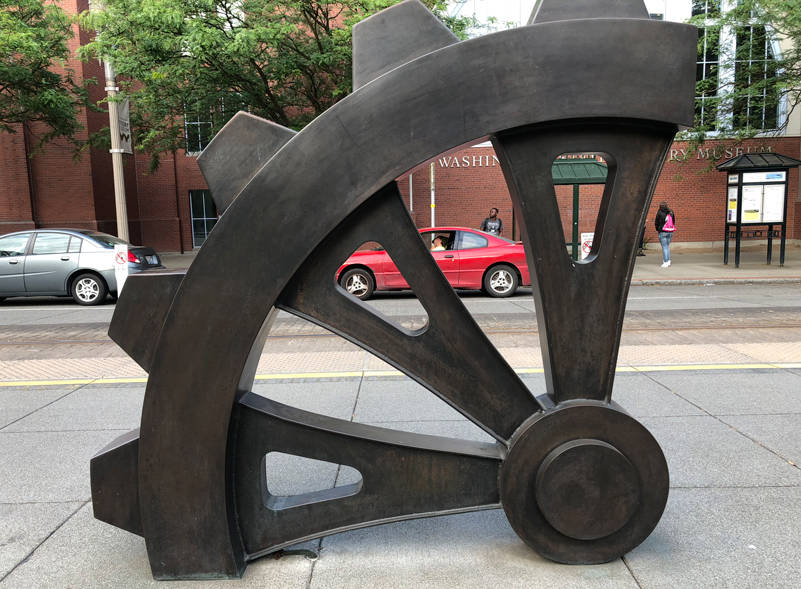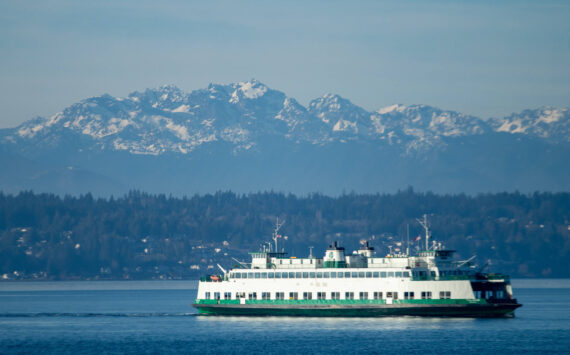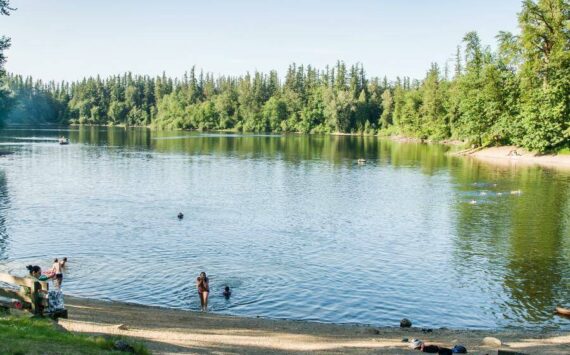By Morf Morford
Tacoma Daily Index
There’s a view of history that posits that social, technological and cultural change happens at an imperceptible pace under our feet and then some external force, war, disease, or natural catastrophe accelerates and consolidates the changes already in motion.
In other words, we unconsciously set the patterns, and external events kick them into motion.
World War II was such a force in the Puget Sound area. Local historians say that the greater Puget Sound area changed more between 1943 and 1945 than in the hundred years before or 75 or so years after.
In 1942 for example, the Auburn Valley and what is now Boeing Field in South Seattle were predominantly agricultural – mostly strawberry farms – owned and operated by mostly Japanese farmers.
Thanks to these farmers Seattle (and Tacoma) had thriving farmers markets (Vashon Island still holds an annual Strawberry Festival in honor of this now lost agricultural community and tradition).
Because of World War II, the Japanese farmers were sent to internment camps, their land paved over and turned into airfields or industrial sites, the population grew dramatically and our economic landscape became defined by shipyards, industry and massive housing developments.
In just a couple years the Puget Sound region flipped from primarily agricultural to urban and industrial. All of it unrecognizable and unforeseeable just a year or two before. This happens on a regular basis in history. And I would argue that it is happening now.
As the tumultuous world around us in 2020 seems to shimmer and shake with every breathless headline or news bulletin, there are some trends to take note of as we make our way through the season.
I would argue that beyond the anxiety, malaise and upheaval of our daily lives, the very foundations of what we all took for granted are being reframed, redefined and reconfigured before our eyes.
In October of 2020, for example, we have had news that Boeing and Regal Theaters will look nothing like they did – and have, for our entire lifetimes.
Hollywood and the travel industry, once central forces in our economy and culture, will be shadows of their former selves – if they exist at all.
In fact I would argue that virtually nothing, from our Postal Service, to our National Parks, to our school system, to Social Security to our electoral system to our economy and to our understanding of our Constitution and the role of government, will look anything like it did just a year or so ago.
For example, in the field of law, we had a simple, defining principle; the ruling of a previous court set a “precedent” – a basis, a pattern, that would set the tone for future laws and interpretations. This has been a legal principle for millennia. It was central to ancient Roman law and virtually every stable legal system since then.
This “first principle” gave us the foundation of “settled law” – we did not need to re-legislate what had already been legally established as the law of the land.
Anything else is a legal free-for-all, with arbitrary rulings and an abandonment of the central belief that all are equal in the eyes of the law.
But in 2020, we have the possibility of the Supreme Court, the final legal body of our nation, abandoning this core principle.
This is where, more than ever, we need some historical perspective.
Politicians from both major parties (and many independent parties as well) claim that this coming election is the most important, pivotal election in our lifetimes – if not in the lifetime of our nation. And who would disagree?
I think we all sense that in more ways than we could define, we are in perilous times and the decisions we make today will define our culture our way of living and our quality of life for decades if not generations to come.
What will school look like? What will our economy look like? What will our political system look like? What will our health care system look like?
At this point in our history, we Americans don’t agree on much, but we do agree that all of these – and more – are at stake in 2020.
If there was ever a series of books to suit – and inform – our times, it is series of books by Thomas Cahill he calls the “hinges of history”. (https://www.penguinrandomhouse.com/series/C9D/the-hinges-of-history)
There are eras defined by trends and movements, and there are seasons where everything seems to shift.
And there is no denying that we are in such a time.
Like the times profiled in these books, nothing is, or is perceived as it once was. Faith, work, and the meaning of life has shifted before our eyes and under our feet. But humans persist and make sense of new situations.
We will survive, we just might even prevail.
But we need to remember that some things don’t matter as much as we thought they did, and some things are worth fighting to the death for.
A “hinge of history” is a time where strands of thought and history (and perhaps a natural catastrophe or plague) converge, and everyone realizes, with a shock or with an eye for change, that, whether anyone desires or intends it, life from this moment on will never be the same.
In short, in these ways, and many others, we are at a “hinge of history” – we are moving in many directions at once, few if any of them unified or coherent. Yet.
But there are a few streams, a few principles, taking shape. The first one might be that our economy, even at its best, was not working for everyone.
Hinges, on doors and in history, swing both ways.
History is only plain (if ever) in looking back. Will we take the higher way and become more civil, more decent, more open and more accessible or will we pursue the way we already seem to have chosen and become more closed, more hostile and more suspicious?
More true to our defining principles or even further from them?
Will we become more united or more divided? More courageous or more afraid? More determined or more paralyzed?
Will we be transfixed by our infatuation for an unreachable, if not mythical past, or work together toward a future based on the values we once aspired to?
Community and fragmentation are both conclusions we can work toward. Every step we make is a step to or away from them.
On all the swirling issues engulfing us in every headline if not conversation, what did we do, what will we do, to make a difference, to make our voices known, to claim our destiny and our place will be the defining issue.
This series of books show us what has been done, and perhaps even where to go from here.
We will look back on this time as a time of great changes, a time when we defined, and redefined ourselves. When we as individuals, as neighborhoods, as communities, maybe even as human beings took a good long look at ourselves an each other and wondered what we could achieve if we worked together instead of against each other.
Our children and grandchildren will ask us what it was like to live in such crazy times.
We will all have stories to tell, and they might begin with “It was the best of times, it was the worst of times…..”





